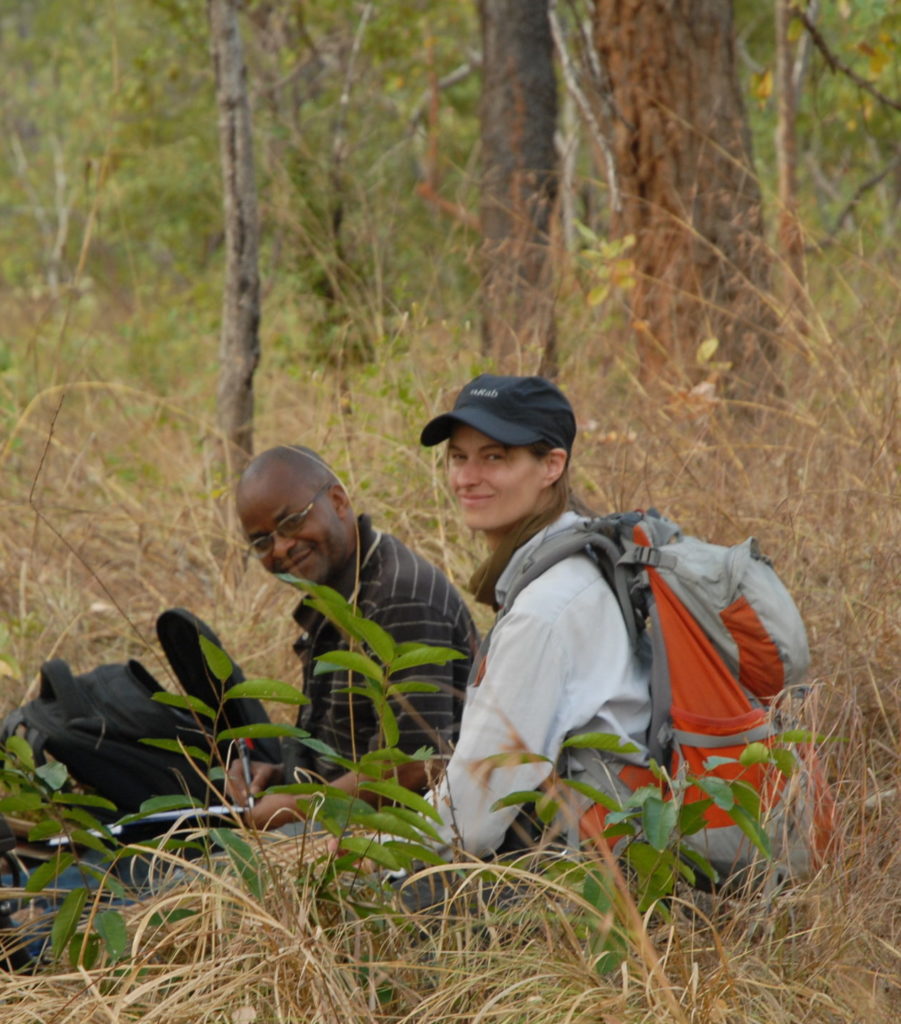A radical approach to forest degradation and destruction.
The role of plantation agriculture in deforestation – and hence biodiversity loss and climate catastrophe – has been widely publicised, particularly in the case of oil palm. However, another plantation crop, vital to modern life, has received much less attention. Dr Antje Ahrends’ work shines a scientific spotlight on the global rubber trade and its impacts on biodiversity and livelihoods.
Double-edged sword
Working with colleagues at China’s Kunming Institute of Botany and elsewhere, Antje uses a combination of ground surveys, remote sensing and modelling to map and quantify changes to the world’s forests. Her ultimate aim is to provide robust evidence to inform policy and management practice. For example, feeding into the debate over whether rubber should be subject to new EU import regulations for commodities linked to deforestation.
Demand for natural rubber is growing year on year. Rubber cultivation has the potential to lift smallholders in tropical regions out of poverty. However, it can also create environmental and social issues including forest clearance and degradation, biodiversity loss, agrochemical pollution, land grabbing, and decreased livelihood security.
The extent of rubber-related deforestation is currently unknown, consumer awareness of its environmental impact is low, and certification schemes cover only a small fraction of production. Because rubber is a natural product extracted from trees, there is also great potential for ‘greenwashing’ at all levels in the supply chain. “It is [therefore] vital to generate accurate figures on rubber and deforestation and to bring these to the attention of policymakers and the public,” Antje says.
Dedicated to data
With a lifelong interest in wildlife, particularly birds, Antje spent several years volunteering with conservation projects across Europe, Chile, Kenya and Tanzania. “I always thought my dream job would be warden of a protected area somewhere remote,” she confides. “When I was offered a job with a conservation NGO I was very tempted. But by then I had realised how important sound data and research are to conservation.” She decided to do a PhD instead: “I enjoy working with data and I sometimes even quite like statistics!” she admits. “I figured that I could make a bigger difference as a scientist.”

Now, Antje says her dream job is, “carrying out conservation-relevant science at an institute that values on-the-ground-impact.” Which, fortunately, is exactly what she does. She enthuses about novel methodologies, from genomics to remote sensing, which enable us to understand biodiversity and global change at previously impossible levels of resolution. “I appreciate the fact that science transcends boundaries, that my work is meaningful and has the potential to make a difference.”
No silver bullet
Antje is under no illusion that solving current global crises will be easy. “The solutions are far from simple. Unless there is a rapid and transformational shift in global consumption, energy use and equity, current challenges will exacerbate.” Drawing on her love of data, she explains, “There is a tendency to think of tree planting as a silver-bullet, but with annual CO2 emissions of 44 Gigatonnes, we would need to plant trees across an area at least the size of China. This would come at the expense of biodiversity and land needed for food production. We need to communicate honestly this bleak reality … there is no other solution than to cut emissions dramatically and change fundamentally how we live and what we value as a society.”
Transdisciplinary working is key to developing innovative solutions, Antje believes. Conservation scientists must work with other disciplines to tackle the increasingly complex challenges and trade-offs we face, particularly around land use. Key to this is the provision of a range of funding schemes of different sizes: “Large multidisciplinary projects are great for developing infrastructure, but sometimes genuine integration and innovation requires only a few researchers and moderate financial input.”
Intrinsic value
It’s clear that Antje has little time for spin and pulls no punches when it comes to providing honest, factual information to both public and policymakers. “We need to be careful not to assume that conservation is necessarily always good for people,” she says. “Conservation measures can have negative impacts on low-income local communities; transparent communication around this is important so that these impacts can be minimised.”
There is an understandable tendency to focus on nature’s value to humans, as a source of food, timber and medicines, and for ecosystem services such as flood protection, water and nutrient cycling. However Antje feels conservation is about more than that: “I personally believe that nature has an intrinsic worth; when biodiversity is reduced to its instrumental value an important ethical dimension is missed.”
Dr Antje Ahrends is Head of Genetics and Conservation at the Royal Botanic Garden Edinburgh. Her work is supported by the Scottish Government’s Rural and Environmental Science and Analytical Services Division, the Players of the People’s Postcode Lottery, and the UKRI Global Challenges Research Fund. Find out more here.
This post is part of a series showcasing Scotland’s innovative, high-impact research supporting biodiversity conservation, in partnership with Scottish Government and NatureScot. Read the rest of the series here.
Further reading
Blomley, T., et al. 2008. Seeing the wood for the trees: an assessment of the impact of participatory forest management on forest condition in Tanzania. Oryx 42(3): 380—391. https://doi.org/10.1017/S0030605308071433
Ahrends, A., et al. 2010. Predictable waves of sequential forest degradation and biodiversity loss spreading from an African city. Proceedings of the National Academy of Sciences of the United States of America 107(33): 14556—14561. https://doi.org/10.1073/pnas.0914471107
Ahrends, A., et al. 2015. Current trends of rubber plantation expansion may threaten biodiversity and livelihoods. Global Environmental Change 34: 48—58. https://doi.org/10.1016/j.gloenvcha.2015.06.002
Ahrends, A., et al. 2017. China’s fight to halt tree cover loss. Proceedings of the Royal Society B 284(1854): 20162559. https://doi.org/10.1098/rspb.2016.2559
